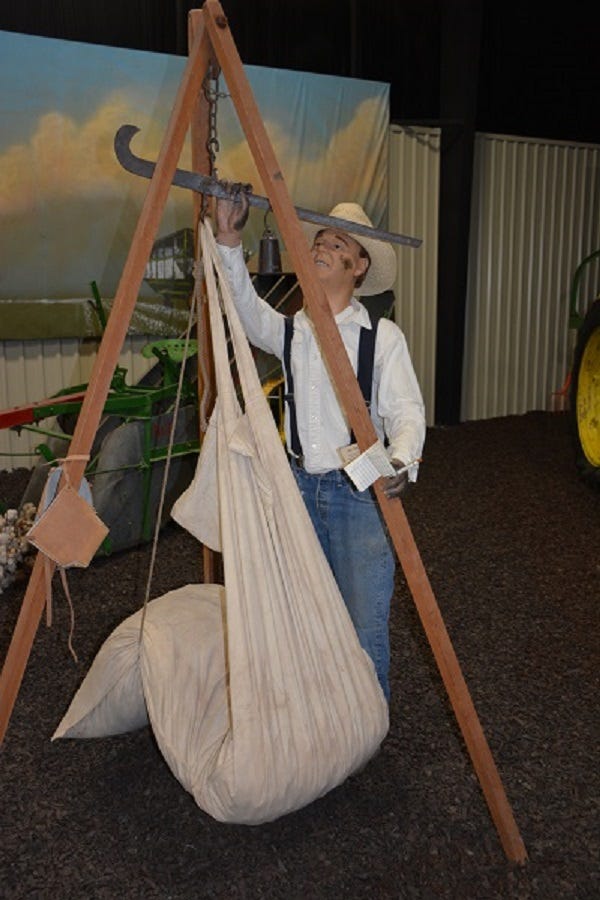
For those of us of a certain age—we who remember combines that required a rider to bag and tie the grain, picker sacks for cotton, and horsepower from actual horses—an hour or so inside the Bayer Museum of Agriculture in Lubbock, Texas, brings back memories, some of them fond, I imagine, but some, too, of hard work and calloused hands.
For those who came along after the widespread use of herbicides, mechanical cotton harvesters and air-conditioned tractors, time spent in the museum offers an opportunity to learn a bit about the heritage and tradition that made and continues to make American farmers the resilient, efficient and determined folks who feed and clothe the rest of us.
The Ag Museum includes displays of machinery, implements, tools, household items that were common as far back as the turn of the century—not the most recent one. Tractors of all colors and brands occupy a large section of the museum. Visitors entering the facility are greeted by a brace of mules (realistically preserved by taxidermy) pulling a grain cutter. Horse-drawn plows, planters and fertilizer distributors line a section of one wall. Another section is devoted to cotton and includes a wooden cotton gin that dates back to the late 1800s, as well as a metal one that looks as if it just arrived from the manufacturer.
A blacksmith shop includes anvils, a forge, bellows and all the tools a smith would need to keep a farm running.
Toy tractors and chain-driven versions of popular models occupy one small room. Next door is a workshop, outfitted with tools of the trade—hammers, saws, wrenches and a few things I can’t identify. Rakes, hoes and pitchforks hang on the walls.
An old John Deere tractor, from the ‘30s I think, features a cutaway section that shows how the pistons work.
One section offers a look into a typical farmhouse from decades ago. Butter churns, foot-operated sewing machines, mechanical meat grinders, and flat irons that were heated in front a fire before they could press a farm wife’s Sunday frock, remind us that hard work was not confined to the fields and barnyards.
The photo gallery above offers a glimpse, but just a glimpse, of the history that is being preserved in this unique museum, located at 1121 Canyon Lake Drive in Lubbock. To get the full effect, you’ll have to stop in and see for yourself. It’s more than worth the time.
About the Author(s)
You May Also Like






